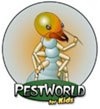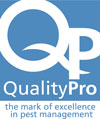Green/Natural Services
At Pest Management Solutions we were “green” before green was cool. We have always weighed the safety of your family, pets, home, business, and environment to find the best solution to your pest problem.
When considering green approaches, what you need to understand first is that risk = toxicity x exposure.
For example, if the pesticide is very poisonous, but no people are exposed, there is no risk. Likewise, if there is plenty of exposure but the chemical is non-toxic, there is no risk.
Our green approach is not a cleverly named program, or single pest control method, or product but rather, a series of pest management evaluations, decisions, and controls. By using integrated pest management techniques along with non-toxic products, we will be prepared for a potential pest infestation and will follow our four-tiered approach:
- Set Action Thresholds
Before taking any pest control action, we first set an action threshold: a point at which pest populations or environmental conditions indicate that pest control action must be taken. Sighting a single pest does not always mean control is needed. The level at which pests will either become a nuisance or an economic threat is critical to guide future pest control decisions. - Monitor and Identify Pests
Not all insects require control. Many organisms are harmless and some are even beneficial. We work to monitor for pests and identify them accurately so that appropriate control decisions can be made along with action thresholds. This monitoring and identification removes the possibility that pesticides will be used when they are not really needed or that the wrong kind of pesticide will be used. - Prevention
As a first line of pest control, we work to manage the space to prevent pests from becoming a threat. Sealing entryways, improving sanitation, and restricting available food and water are just some of the control methods that can be very effective and cost-efficient, while presenting little to no risk to people or the environment. - Control
Once monitoring, identification, and action thresholds show that pest control is required, and preventive methods are no longer effective or available, we then evaluate the best control method both for effectiveness and risk. Effective, less risky pest controls are chosen first, including highly targeted chemicals, such as pheromones, to disrupt pest mating, or mechanical control, such as trapping or exclusion. If further monitoring, identifications, and action thresholds indicate that less risky controls are not working, then additional pest control methods would be used, such as targeted spraying of pesticide is a last resort.






 Milwaukee, Waukesha, Ozaukee, and Washington Counties
Milwaukee, Waukesha, Ozaukee, and Washington Counties